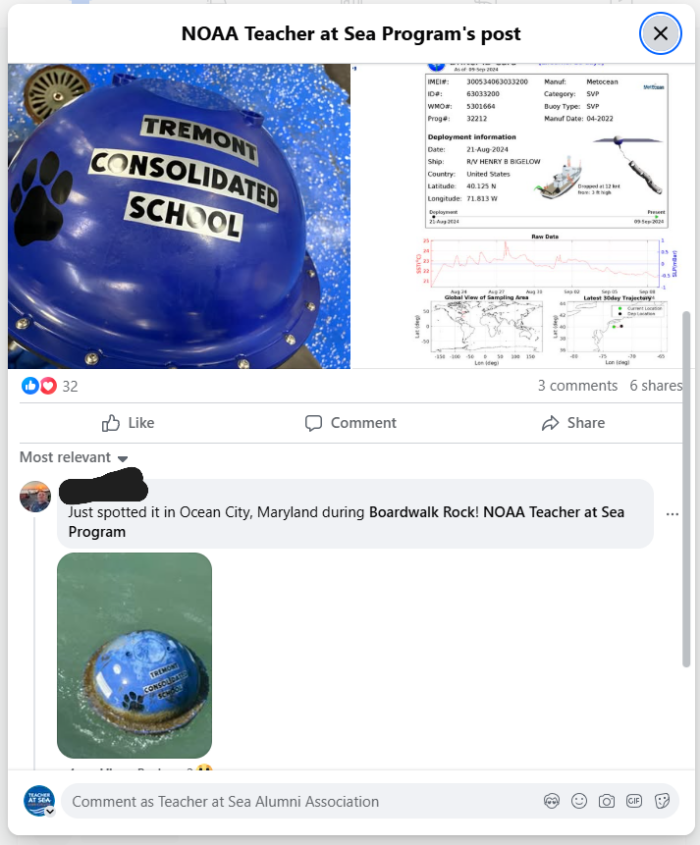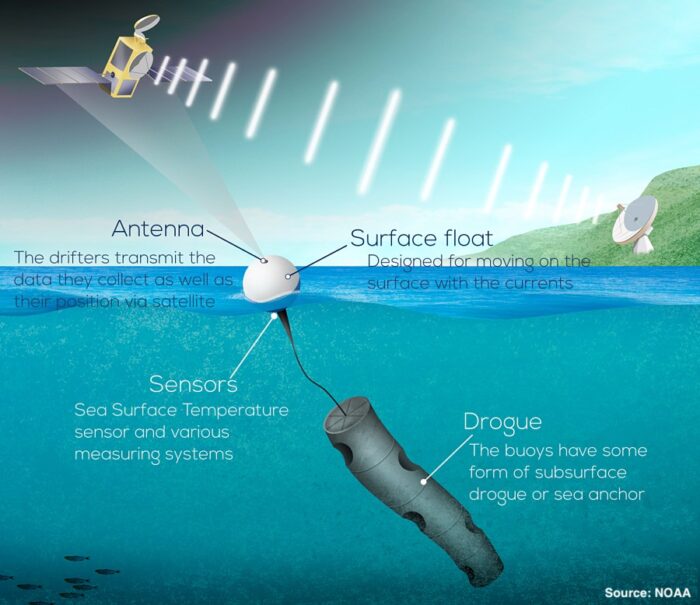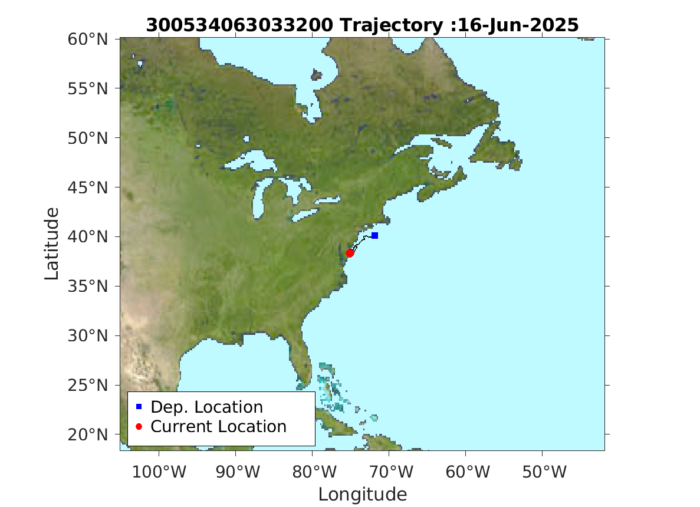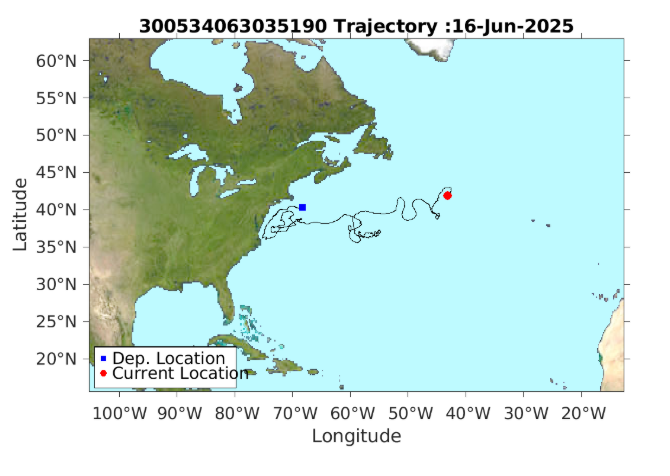
Buoy, Oh Buoy! A Drifter’s Unlikely Journey

When Tonya Prentice (TAS ’24) sailed on the NOAA Ship Henry B. Bigelow, her school, Tremont Consolidated School in Bass Harbor, ME, had been assigned two drifter buoys for Tonya to deploy, through the NOAA Adopt a Drifter Program.
After roughly nine months at sea, one of those drifter buoys was spotted in the waters off Ocean City, MD, by an attendee at a nearby music festival, and reported on the NOAA TAS Facebook page. This is the first time in TAS history that a teacher’s drifter has washed up and been reported.

In case you’re not familiar with drifter buoys, a drifter, or drifting buoy, is a piece of scientific equipment that measures sea surface temperature, but most are also equipped to measure other variables. As the drifter moves around, guided by ocean currents, measurements of atmospheric pressure, winds, wave height, and salinity can be taken. This data is collected by sensors in the drifter and transmitted to overhead satellites. Tracking the location of drifters over time allows scientists to build a profile of ocean currents. You can read more about drifter buoys here.

The NOAA Adopt a Drifter Program’s mission is to establish scientific partnerships between schools around the world and engage students in activities and communication about ocean science. While teachers who sail have participated in the Adopt a Drifter Program, you don’t need to be at sea. You can apply to the program here and participate with your school any time.
To see where Tonya’s drifter buoys have traveled, click here.


In the history of the program, these are some of the teachers who have deployed drifter buoys:
Debra Brice (2003)
Nancy Lewis (2003)
Mary Cook (2004)
Joan Raybourn (2005)
Eric Heltzel ((2005)
Tamil Maldonado (2005)
Jim Jenkins (2005)
Brett Hoyt (2006)
Vince Rosato (2006)
Kim Pratt (2006)
Karolyn Braun (2006)
Karen Meyers (2006)
Alexa Carey (2006)
Amy Pearson (2007)
Jacob Tanenbaum (2008)
Rebecca Bell (2008)
Dave Grant (2008)
Robert Oddo (2009)
Bryan Hirschman (2009)
Richard Jones (2010)
Art Bangert (2010)
Kathy Shroeder (2010)
Stephen Bunker (2011)
Elizabeth Bullock (2011)
Sue Oltman (2012)
Wes Struble (2012)
Bhavna Rawal (2012)
Sue Cullumber (2013)
Frank Hubacz (2013)
Sue Zupko (2014)
Kimberly Gogan (2014)
DJ Kast (2015)
Sam Northern (2017)
Susan Dee (2018)
Tom Savage (2018)
Martha Loizeaux (2018)
Callie Harris (2019)
Nick Lee (2024)
Tonya Prentice (2024)
Image credits: NOAA Teacher at Sea, NOAA
